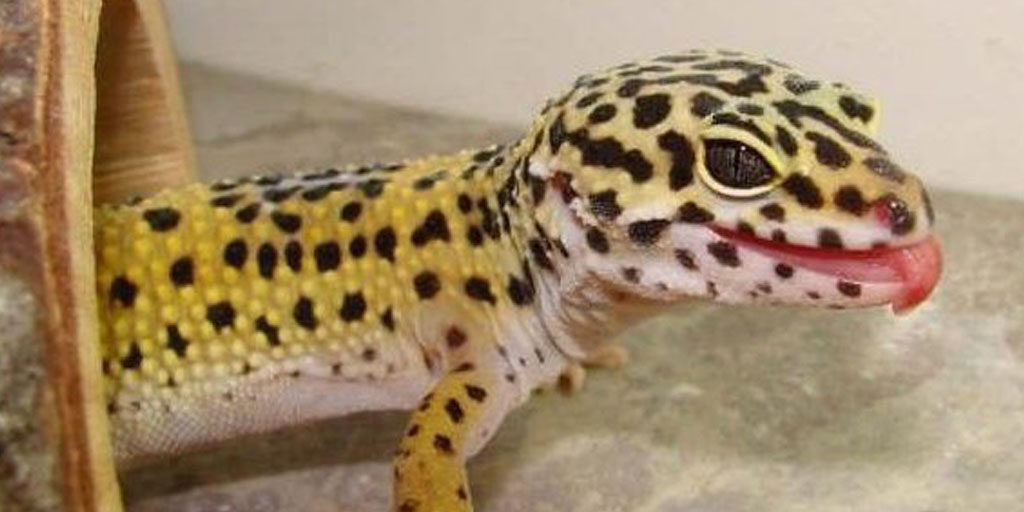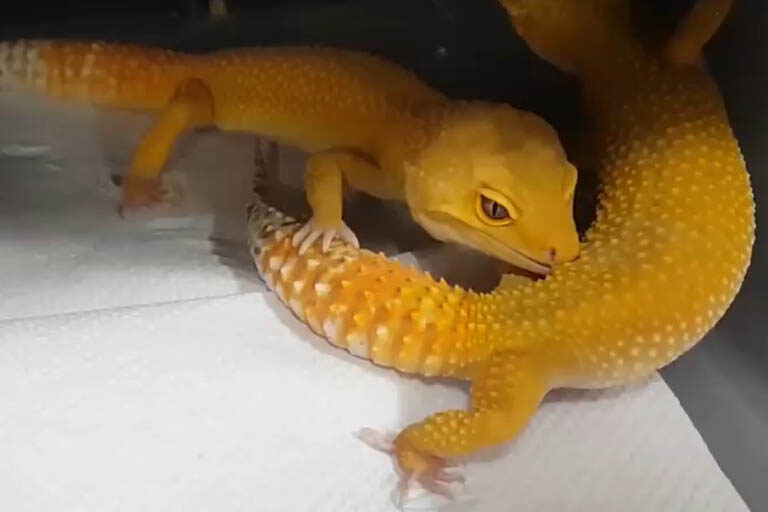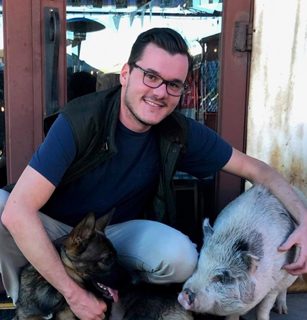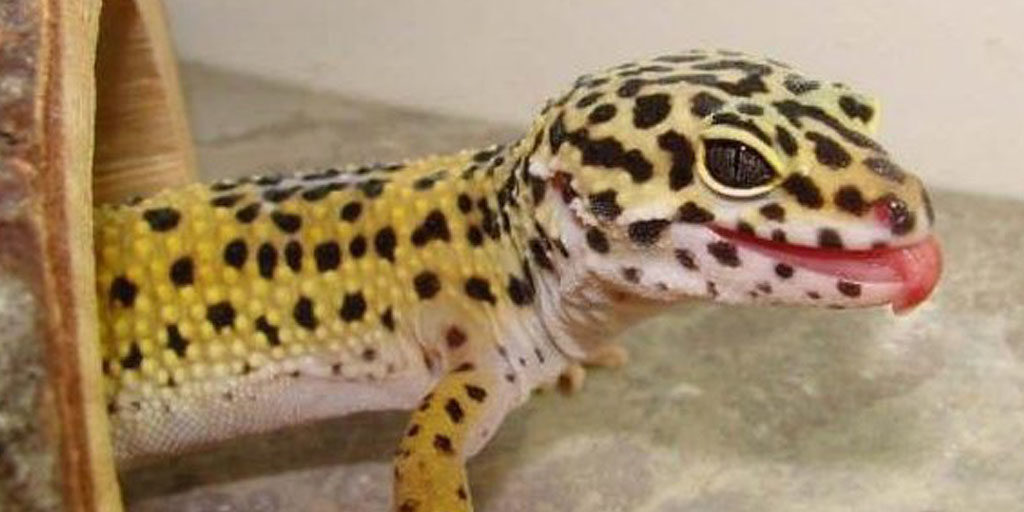
Bite injuries in Leopard geckos are commonly seen as tail wounds (or the entire tail falling off), neck wounds, leg and toe wounds, eye wounds and lip wounds.
Table of Contents
Tail wounds in Leopard geckos
Tail wounds from biting are more frequently seen when different sized Leopard geckos are housed together, where too many babies or juvenile Leopard geckos are housed together (overcrowding) or during breeding (see later). Feeding frenzies often result in (larger) Leopard geckos snapping and biting anything that moves, which often includes moving tails of other Leopard geckos. Feeding frenzies can also result in human bites. Also see tail injuries in Leopard geckos for more information.
Neck & lip-biting injuries
Neck biting is usually due to vigorous mating behaviour. During the breeding season, a male Leopard gecko will attempt to mate by biting onto the neck or lip area of a susceptible female. The incidence of these Leopard gecko bite injuries and wounds can be reduced by introducing more females to the group or to allow proper rest periods for females during the breeding season. Pairing with a larger female might also reduce injuries from a large male.
 Male Leopard gecko biting a female during courtship. Injuries from mating will often be seen on the neck of female Leopard geckos. Image 정브르 (CC BY YouTube)
Male Leopard gecko biting a female during courtship. Injuries from mating will often be seen on the neck of female Leopard geckos. Image 정브르 (CC BY YouTube)
Male dominance
Male dominance, or territorial behaviour in Leopard geckos can also be seen by biting injuries. During the breeding season, or less often during other times too, male Leopard geckos become territorial and aggressive towards each other. Fiting will lead to tail wounds, lip wounds, leg and toe wounds, eye wounds and wounds in any other area that can be bitten. Adult males will often fight for the ability to mate with females. It is not advised to keep more than one male Leopard gecko per colony.
Leopard gecko eye wounds
Leopard gecko eye wounds can be seen with bites to the head. Although eye wounds are rare, they can be quite serious and can result in impairment of vision, eye infections and even the loss of an eye. These injuries should be treated under the guidance of an experienced reptile veterinarian.
Leg and toe bite wounds
Although leg and toe wounds are more often seen as a result of shedding problems, bite wounds to these areas can also be seen from time to time. As mentioned earlier, leg and toe bite wounds can be due to fighting or feeding frenzies in Leopard geckos.
Treating bite injuries in Leopard geckos
Most Leopard gecko bite wounds will need little intervention from the owner, except when bleeding cannot be controlled or when swelling and infection sets in. The incidence of infection can be reduced by applying antiseptic ointment or starting a course of prophylactic antibiotics, available upon clinical examination by a reptile friendly veterinarian.

Dr. Liam Anderson is a herpetologist with over 10 years of experience in reptile care. Holding a PhD in Herpetology from the University of Florida, he is dedicated to the health and well-being of leopard geckos. As the lead writer for LeopardGeckos101.net, Dr. Anderson provides expert care guides and health tips, ensuring the site’s authority and trustworthiness. Connect with him on Instagram at @leopard_geckos_101.

